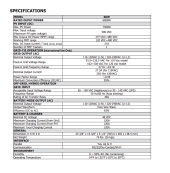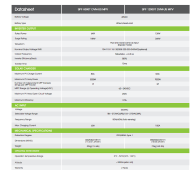Quankl
New Member
- Joined
- Apr 10, 2022
- Messages
- 140
Good day,
Question. Every inverter i've seen so far has a Max Input Current from the Solar Array inside the manual. However I realise none of the non parallellable Growatts 12kw, 8kw, 6kw have this spec listed.
Seems every inverter differentiates
"Max PV Charging Current" as Charging current into the battery, whether from Solar and/or Grid Assist
and
"Max PV Input Current" - Maximum that the solar array should cap at in terms of current.
Correct me if im wrong on those two terms and if I really am missing a spec for the Growatts relating to the Array Max Current figure
Any advice?
Secondly,
Hypotherical question. Is it possible to have two different brands and capacities of batteries on multiple inverters?
For example 4 EG4 5KW Lifepo4 and then a 10KW Powerwall providing power to two of the 6KW growatt inverters which supply separate loads. There are NOT connected together at all other than the battery terminals but they also have their own Solar PV inputs feeding the same batteries.. Could that be done?
Question. Every inverter i've seen so far has a Max Input Current from the Solar Array inside the manual. However I realise none of the non parallellable Growatts 12kw, 8kw, 6kw have this spec listed.
Seems every inverter differentiates
"Max PV Charging Current" as Charging current into the battery, whether from Solar and/or Grid Assist
and
"Max PV Input Current" - Maximum that the solar array should cap at in terms of current.
Correct me if im wrong on those two terms and if I really am missing a spec for the Growatts relating to the Array Max Current figure
Any advice?
Secondly,
Hypotherical question. Is it possible to have two different brands and capacities of batteries on multiple inverters?
For example 4 EG4 5KW Lifepo4 and then a 10KW Powerwall providing power to two of the 6KW growatt inverters which supply separate loads. There are NOT connected together at all other than the battery terminals but they also have their own Solar PV inputs feeding the same batteries.. Could that be done?
Last edited:




